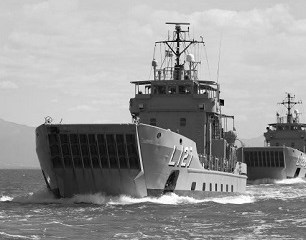Wide exposure to asbestos
Most ex-Naval personnel who served onboard Australian Naval Vessels between about 1945 and the 1980’s are likely to have been exposed to asbestos at some stage during their Naval service, either because they were working with asbestos themselves or were present when others, either Naval personnel or Dockyard personnel were working with it. As pipes which were insulated with asbestos insulation also ran throughout Naval ships during that period, ex-servicemen would have been exposed to asbestos from the pipe vibration alone. Many have related stories of how bunks were covered in dust which emanated from the asbestos insulation on the pipes which ran through the accommodation spaces.
Asbestos insulation
It wasn’t just ex-Naval personnel who were exposed to asbestos but also Army personnel who lived in barracks constructed of fibro or who were exposed to asbestos brake linings or who were transported to Vietnam in HMAS Sydney which had been converted to a troop carrier. HMAS Sydney contained asbestos insulation, some of it being crocidolite or blue asbestos which is the most dangerous type of asbestos.
Nor were Air Force Personnel exempt from exposure to asbestos and from time to time they too were exposed to living quarters constructed of fibro building products, asbestos gaskets or asbestos brake linings.
Whilst most ex-servicemen know about their rights under the Veterans’ Entitlements Act 1986 and their statutory rights under the Safety Rehabilitation and Compensation Act, 1988, many of them do not realise there is another alternative to these compensation options and that is a negligence action for damages against Comcare.
In most cases the damages awarded pursuant to a negligence action for damages are greater than the amount that would be received through either of the alternative options.
For this reason ex-servicemen should consult one of Turner Freeman’s dust practitioners before they commit to a claim under the Veterans’ Entitlements Act or the Safety Rehabilitation and Compensation Act 1988. The reason for this is that if they proceed with a claim under either of those Acts, they may then be precluded from then bringing a negligence action for damages.
It is not just ex-servicemen who are impacted in this way. Commonwealth civilian employees who worked at Garden Island Dockyard in New South Wales or Williamstown Dockyard in Victoria and who were exposed to asbestos during their employment with the Commonwealth should also seek advice prior to making any decision about a claim.
